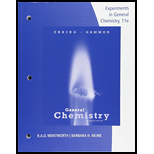
(a)
Interpretation:
The alcohol present in the given compound has to be classified whether it is primary, secondary or tertiary.
Concept Introduction:
In an organic compound, the reactive portion is known as functional group. This undergoes reactions with other reagents and this does not depend upon how the rest of the compound is like. Few of the common
In alcohol compound, the functional group is hydroxyl. If the hydroxyl is bonded to a carbon which bears two hydrogen atoms means it is primary alcohol. If the hydroxyl group is bonded to a carbon which bears one hydrogen atom means it is a secondary alcohol and if it is bonded to a carbon atom which does not have any hydrogen atom means it is tertiary alcohol.
(b)
Interpretation:
The alcohol present in the given compound has to be classified whether it is primary, secondary or tertiary.
Concept Introduction:
In an organic compound, the reactive portion is known as functional group. This undergoes reactions with other reagents and this does not depend upon how the rest of the compound is like. Few of the common functional groups are alcohol, ester, carboxylic acid, ketone, aldehyde etc. Functional group determines the nature of the compound.
In alcohol compound, the functional group is hydroxyl. If the hydroxyl is bonded to a carbon which bears two hydrogen atoms means it is primary alcohol. If the hydroxyl group is bonded to a carbon which bears one hydrogen atom means it is a secondary alcohol and if it is bonded to a carbon atom which does not have any hydrogen atom means it is tertiary alcohol.
(c)
Interpretation:
The alcohol present in the given compound has to be classified whether it is primary, secondary or tertiary.
Concept Introduction:
In an organic compound, the reactive portion is known as functional group. This undergoes reactions with other reagents and this does not depend upon how the rest of the compound is like. Few of the common functional groups are alcohol, ester, carboxylic acid, ketone, aldehyde etc. Functional group determines the nature of the compound.
In alcohol compound, the functional group is hydroxyl. If the hydroxyl is bonded to a carbon which bears two hydrogen atoms means it is primary alcohol. If the hydroxyl group is bonded to a carbon which bears one hydrogen atom means it is a secondary alcohol and if it is bonded to a carbon atom which does not have any hydrogen atom means it is tertiary alcohol.
(d)
Interpretation:
The alcohol present in the given compound has to be classified whether it is primary, secondary or tertiary.
Concept Introduction:
In an organic compound, the reactive portion is known as functional group. This undergoes reactions with other reagents and this does not depend upon how the rest of the compound is like. Few of the common functional groups are alcohol, ester, carboxylic acid, ketone, aldehyde etc. Functional group determines the nature of the compound.
In alcohol compound, the functional group is hydroxyl. If the hydroxyl is bonded to a carbon which bears two hydrogen atoms means it is primary alcohol. If the hydroxyl group is bonded to a carbon which bears one hydrogen atom means it is a secondary alcohol and if it is bonded to a carbon atom which does not have any hydrogen atom means it is tertiary alcohol.
To Classify: Whether the given alcohol is a primary, secondary or tertiary alcohol.
Want to see the full answer?
Check out a sample textbook solution
Chapter 23 Solutions
Lab Manual Experiments in General Chemistry
- A mixture of three compounds Phen-A, Acet-B and Rin-C was analyzed using TLC with 1:9 ethanol: hexane as the mobile phase. The TLC plate showed three spots of R, 0.1 and 0.2 and 0.3. Which of the three compounds (Phen-A; Acet-B or Rin-C) would have the highest (Blank 1), middle (Blank 2) and lowest (Blank 3) spot respectively? 0 CH: 0 CH, 0 H.C OH H.CN OH Acet-B Rin-C phen-A A A <arrow_forwardHow many chiral carbons are in the molecule? Farrow_forwardcan someone give the curly arrow mechanism for this reaction written with every intermediate and all the side products pleasearrow_forward
 Chemistry for Today: General, Organic, and Bioche...ChemistryISBN:9781305960060Author:Spencer L. Seager, Michael R. Slabaugh, Maren S. HansenPublisher:Cengage Learning
Chemistry for Today: General, Organic, and Bioche...ChemistryISBN:9781305960060Author:Spencer L. Seager, Michael R. Slabaugh, Maren S. HansenPublisher:Cengage Learning World of Chemistry, 3rd editionChemistryISBN:9781133109655Author:Steven S. Zumdahl, Susan L. Zumdahl, Donald J. DeCostePublisher:Brooks / Cole / Cengage Learning
World of Chemistry, 3rd editionChemistryISBN:9781133109655Author:Steven S. Zumdahl, Susan L. Zumdahl, Donald J. DeCostePublisher:Brooks / Cole / Cengage Learning Introductory Chemistry: A FoundationChemistryISBN:9781337399425Author:Steven S. Zumdahl, Donald J. DeCostePublisher:Cengage Learning
Introductory Chemistry: A FoundationChemistryISBN:9781337399425Author:Steven S. Zumdahl, Donald J. DeCostePublisher:Cengage Learning Introductory Chemistry: An Active Learning Approa...ChemistryISBN:9781305079250Author:Mark S. Cracolice, Ed PetersPublisher:Cengage LearningChemistry: Matter and ChangeChemistryISBN:9780078746376Author:Dinah Zike, Laurel Dingrando, Nicholas Hainen, Cheryl WistromPublisher:Glencoe/McGraw-Hill School Pub Co
Introductory Chemistry: An Active Learning Approa...ChemistryISBN:9781305079250Author:Mark S. Cracolice, Ed PetersPublisher:Cengage LearningChemistry: Matter and ChangeChemistryISBN:9780078746376Author:Dinah Zike, Laurel Dingrando, Nicholas Hainen, Cheryl WistromPublisher:Glencoe/McGraw-Hill School Pub Co Organic And Biological ChemistryChemistryISBN:9781305081079Author:STOKER, H. Stephen (howard Stephen)Publisher:Cengage Learning,
Organic And Biological ChemistryChemistryISBN:9781305081079Author:STOKER, H. Stephen (howard Stephen)Publisher:Cengage Learning,





